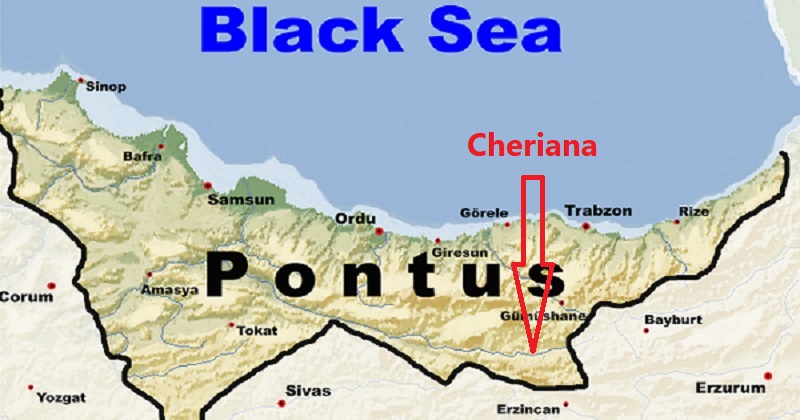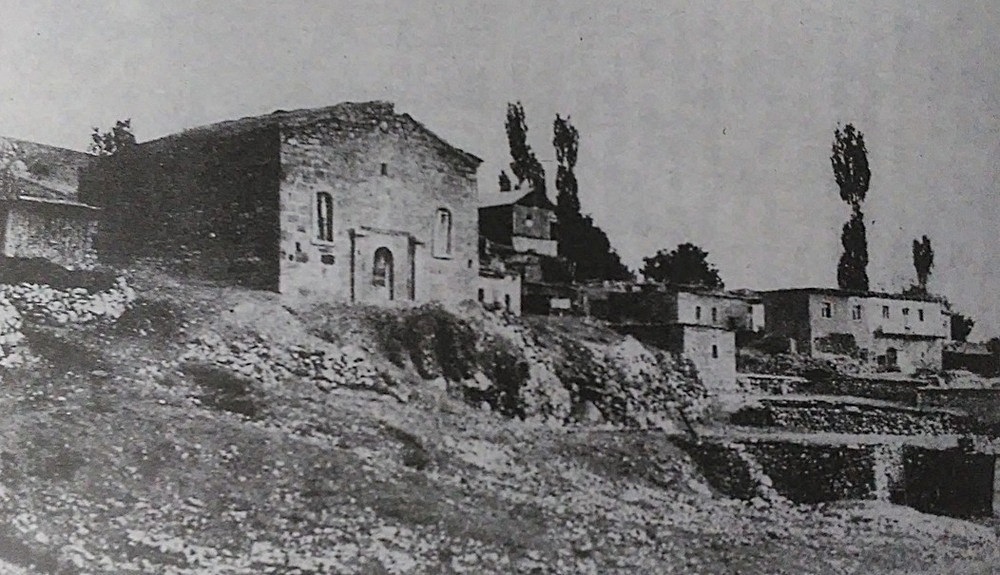
Kheriana, or Khaeriani (Gr: Χερροίανα, Tr: Şiran) was the name of an area within the region known as Chaldia. Kheriana was also part of a region which the Byzantines called Little Armenia. Author and educator Savvas Ioannidis (1829-1910) of Bursa visited Kheriana in the middle of the 19th century and observed many Greek villages of which some belonged to the Diocese of Chaldia and others to the Diocese of Neocaesarea. He noted that many of the Greeks were Turcophone.
At one stage there were 72 Greek villages in Kheriana however the majority of the Greeks were forced to immigrate to Russia as a result of pressure by local Muslims in waves during 1829, 1856 and 1878. Before the exchange (1923), however, there were approximately 24 Greek villages.
According to Ioannidis, the Episcopos (Bishop) of Nicopolis Ieremias (Jeremiah) built a monastery on top of the ruins of the Castle of Akritas whose school he was planning to make into the central school of the region. But the local Muslims, the majory of whom were Karduki Kurds opposed his plans. The seat of Kheriana was Garatza. When the Greeks of the region immigrated to Russia as a result of pressure from local Muslims (Kurds and Turks), Circassians settled in the regions they abandoned.
The church of Saint Theodoros, Kheriana.
View a more recent photo of the church .
Prior to 1923, there were the following settlements: Zimona (20 familes), Pintsanton, Parotsi ( 8 ), Ano (Upper) Tarsos or Eski (35), Kato (lower) Taros (120), Salut or Tsapoutli (60), Tsagul or Tsaul (45), Kimibatur (20), Ulu Siran (20), Mavrolith (30), Ano Pelen (30), Paputs (16), Tumbanoglou (30) and Selin dere (70).
View a more complete list of the Greek settlements of Kheriana
Religiously, Kheriana originally belonged to the diocese of Trebizond but in the beginning of the 17th century it joined with the new bishopric of Kaniou when it was created. Then, with the creation of the diocese of Chaldia, it incorporated into the diocese of Chaldia, Kheriana and Kerasunta.
In the mid 19th century, some of the villages of the region were considered part of a township called Kheriana with a total population of 2,500 of which 1,500 were Muslims and 1,000 were Christians (half of which were crypto-Christians).
Source: The Encyclopedia of Pontian Hellenism, Malliaris 1988.
